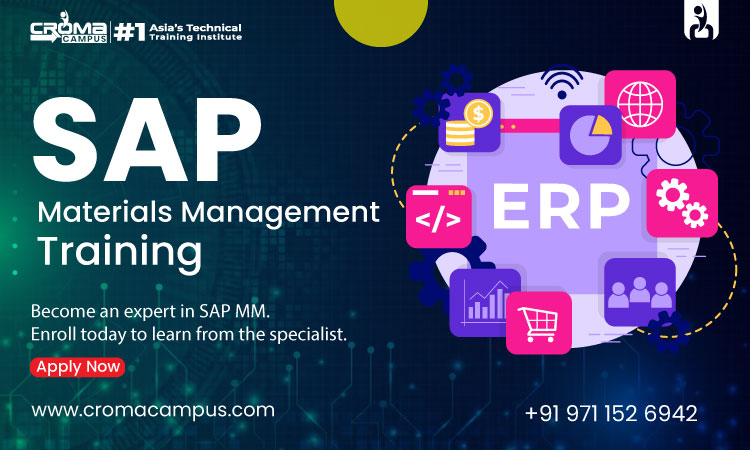Introduction
In the dynamic landscape of modern business, organizations continually seek ways to streamline their operations, enhance productivity, and achieve optimal efficiency. The realm of supply chain management plays a pivotal role in this pursuit and the SAP MM Course emerges as a powerful solution that drives productive outcomes for businesses.
Let’s now have a look at the myriad ways in which SAP MM contributes to organizational success.
Productive outcome of SAP MM
SAP MM serves as the backbone for integrated procurement processes, seamlessly connecting various departments within an organization. By automating procurement activities such as purchase requisitions, purchase orders, and goods receipts, SAP MM 92career streamlines the entire procurement lifecycle. This integration not only reduces manual errors but also accelerates the procurement process, ensuring timely and efficient supply chain operations.
Real-time Inventory Management:
One of the key features of SAP MM is its ability to provide real-time visibility into inventory levels and movements. The system enables organizations to maintain optimum stock levels, preventing both overstock and stock-outs. By having a real-time overview of inventory, businesses can make informed decisions, optimize warehouse space, and reduce carrying costs, leading to improved profitability and operational efficiency.
Strategic Vendor Management:
SAP MM facilitates strategic vendor management by centralizing supplier information and performance metrics. Organizations can assess vendor the spongegirl case performance, negotiate better terms, and establish long-term partnerships with reliable suppliers. The system’s Vendor Evaluation functionality allows businesses to make informed decisions based on historical supplier performance data, ensuring a robust and reliable supply chain.
Efficient Material Planning:
SAP MM empowers organizations with effective material planning capabilities. By utilizing tools such as Material Requirements Planning (MRP), businesses can forecast demand, plan production schedules, and optimize resource utilization. This results in reduced lead times, minimized production disruptions, and enhanced overall operational efficiency.
Cost Control and Financial Integration:
The cost control features of SAP MM contribute significantly to financial management. The system allows organizations to track costs associated wesomenia with procurement, inventory management, and logistics. Integration with other SAP modules, such as SAP Financial Accounting (FI), enables seamless financial reporting, providing a comprehensive view of costs throughout the supply chain.
Compliance and Risk Mitigation:
With the ever-evolving landscape of regulations and compliance requirements, SAP MM plays a crucial role in ensuring organizations adhere to industry standards. The system incorporates features to manage compliance with legal and regulatory frameworks, reducing the risk of penalties and reputational damage. By maintaining accurate records and documentation, businesses can navigate complex compliance landscapes with confidence.
Enhanced Decision-Making with Analytics:
SAP MM’s analytics and reporting capabilities empower organizations with valuable insights into their supply chain performance. With customizable reports and dashboards, decision-makers can analyse key performance indicators (KPIs), identify trends, and make data-driven decisions. This analytical prowess allows businesses to continuously optimize their supply chain strategies for maximum efficiency.
User-Friendly Interface and Accessibility:
SAP MM is designed with a user-friendly interface, making it accessible to a wide range of users within an organization. With intuitive navigation Business Bay Metro Station Exit 1 and a well-organized structure, users can quickly adapt to the system, minimizing the learning curve. This accessibility ensures that key stakeholders across departments can actively engage with the platform, fostering collaboration and communication.
Conclusion
Well, SAP MM stands as a catalyst for productive outcomes in the realm of supply chain management. Its integrated approach to procurement, real-time inventory management, strategic vendor management, efficient material planning, cost control; compliance management, analytics, and user-friendly interface collectively contribute to a streamlined and optimized supply chain. As organizations continue to face the challenges of a competitive market, embracing SAP MM Certification Cost becomes not just a choice but a strategic imperative. By leveraging the power of SAP MM, businesses can achieve unparalleled efficiency, drive productivity, and position themselves for sustained success in the ever-evolving landscape of the global supply chain.

